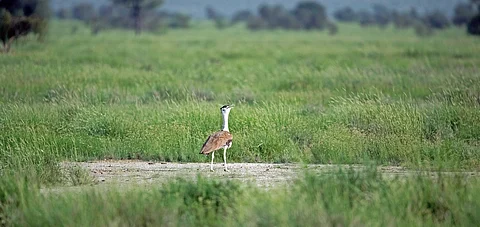
- Destinations
- Experiences
- Stay
- What's new
- Editor’s Picks
- Responsible Tourism
- CampaignsCampaigns
- Subscribe

The Maharashtra state government has issued a notification of Muniya as Conservation Reserve (CR).
In December 2020, the State Board of Wildlife (SBWL) had okayed 11 conservation reserves in Maharashtra, including three from Vidarbha.
The list of conservation reserves was reviewed under the chairmanship of Chief Minister Uddhav Thackeray.
The Muniya conservation reserve is spread across 96.01 sq km of which 60.82 sq km comes under reserve forest and 35.18 sq km is deemed as a protected forest area.
In 2007, a few NGOs had raised the demand to the then PCCF to declare Muniya a Conservation Reserve in order to protect the rich bio-diversity and wildlife in the forest range.
Muniya falls in the Umred-Bhivapur taluk of Nagpur district, Maharashtra. According to Wildlife Trust of India, it is a potential wildlife corridor (a natural habitat linkage allowing for wildlife movement between two larger forest patches) connecting Bor Tiger Reserve in the Umred-Karhandla Wildlife Sanctuary with Tadoba-Andheri Tiger Reserve.
Unlike national parks and wildlife sanctuaries, conservation reserves do not have their own buffer zones but these are protected areas that act as buffer zones. They also act as migration corridors between national parks, wildlife sanctuaries, protected forests, and other reserved areas. Any kind of development or activities, including agricultural, within such areas must seek approval from the central or state wildlife boards.
The forest in the conservation area has scheduled fauna such as leopards, Great Indian Bustard (GIBs), blackbucks, pented storks, alongside 100 species of birds and mammals. Muniya is just one step further from having the reserved forest status.
The reserve runs from Butibori and North Umred forest range under the Nagpur division consisting of a total of 39 compartments which includes 24 compartments of Butibori and 15 compartments of North Umred range.
It covers Kachhimeth and Mangrul ranges in its north as boundaries Thara, Masepathar, Wagholi, Jamalpani, Dawha, Sindivihri, Makardhokda, Jamgad, Murzadi, Bhiwgad, Dewli, Mendepathar, Panjrepar (Rithi), Pandhartal, Pipardol, Lohara, Pipardol, Pipardol, Sukli are covered in the east, while in the west the boundary extends to Kohala, Muradpur, Chargaon, Nishanghat, Pitichuwa, Junapani, Thana, Sindivihri, and Tumdi. In the south, it includes Amghat, Chikhaldhokda, Borimanjra, Rakhi and Sawangi.
By declaring Muniya as a Conservation Reserve, the government intends to protect the area under the Wildlife Protection Act (WPA) of 1972. Any development project proposed within the area will require clearance under the Forest Conservation Act, 190, along with the approval of SBWL and the National Board for Wildlife (NBWL).
This step will help to protect and preserve the forests and also the wildlife of Muniya. The state government also plans to run numerous projects and schemes for villagers inside the new reserve.
